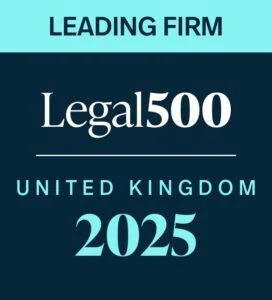Many countries across the globe adopt a sharing principle when dividing assets on divorce meaning that the starting point shall be the equal division of any assets generated during a marriage. A marriage in England is regarded as a partnership of equals and therefore the fruits should also be shared 50/50. In some cases, it may be appropriate to award a greater share to one party to meet needs.
It is of crucial importance that there is confidence in the totality of assets in a case. This is achieved through the exchange of financial disclosure between the parties. The English Court has wide powers in this regard. Numerous and far-reaching orders can be made against the persistent non discloser. Cost sanctions can also be imposed. Questions do, however, arise as to how long and how much should be spent on searching for assets where the chances of discovery are slim. This is especially pertinent for international spouses where assets are located in several jurisdictions. Different countries have different approaches to this issue. Over the decades, England has adopted a device of making adverse inferences to overcome this problem. A Court can infer that the non-disclosing spouse has assets and can make orders accordingly.
The Court’s Approach
The approach adopted was considered in the case of NG v SG [1] When the English Court is satisfied that there has been material non -disclosure then:
- “The Court is duty bound to consider by the process of drawing adverse inferences whether funds have been hidden.
- But such inferences must be properly drawn and reasonable. It would be wrong to draw inferences that a party has assets which, on an assessment of the evidence, the Court is satisfied he has not got.
- If the Court concludes that funds have been hidden then it should attempt a realistic and reasonable quantification of those funds, even in the broadest terms.
- In making its judgment as to quantification the Court will first look to direct evidence such as documentation and observations made by the other party.
- The Court will then look to the scale of business activities and at lifestyle.
- Vague evidence of reputation or the opinions or beliefs of third parties is inadmissible in the exercise.
- The Al-Khatib v Masry [2] technique of concluding that the non-discloser must have assets of at least twice what the Claimant is seeking should not be used as the sole metric of quantification.
- The Court must be astute to ensure that a non-discloser should not be able to procure a result from his non-disclosure better than that which would be ordered if the truth were told. If the result is an order that is unfair to the non-discloser it is better that than that the Court should be drawn into making an order that is unfair to the Claimant” [3]
Case studies
Over the years there have been various reported cases on this topic. The Courts have not feared making robust findings. The cases listed below are only a small selection of the awards made.
Al-Khatib v Masry [4]
The parties separated after 15 years of marriage. The Husband was a Saudi businessman. The Wife sought financial relief from the Husband. For many years, the Husband refused to provide disclosure or any other formal evidence and would not answer questions. He also refused to attend Court.
In the absence of a clear breakdown of the Husband’s income and assets, the Wife asserted that he was worth in the region of $200 million and sought £24 million. At an interim hearing, a judge gave the Husband a warning that, in the absence of full, complete and frank disclosure the Court would most likely draw the inference that the Husband’s total assets were such as to justify the award that the Wife sought. The Husband did eventually produce some evidence, but the Wife was able to identify a number of specific instances of non-disclosure and inconsistency.
In the end, the Court awarded the Wife assets worth over £23 million.
The Court drew the inference that the Husband had sufficient assets to satisfy the Wife’s claim. The Court was only entitled to draw inferences from the evidence before the Court which was limited. However, it did include evidence from the Husband’s friends and business acquaintances, documentary evidence as to the scale of commissions earned by the Husband, evidence as to the value of certain properties and investments held by the Husband and the scale and determination of the Husband’s attempts to remove the assets from the reach of the court. While the evidence before the Court did not justify an inference that the Husband was worth more than $200 million, it did justify a finding that the full extent of the family assets was comfortably in excess of £50 million.
Munby J:
[95] ‘the husband has never purported to give anything that can properly be described as a connected or narrative account of his business dealings or any real details of either the nature or scale of his commercial activities. In the circumstances, as I have found them to be the inferences properly to be drawn are, in my judgement, first, that the husband’s business activities have been, and continue to be, on the kind of grandiose scale indicated by the evidence of his business associates’… ‘and secondly that the extent of his earnings and wealth derived from his business activities is, has been, and continues to be, vastly greater than he has ever been prepared to admit’
Moher v Moher [5]
The Husband (52) and Wife (45) had been married for 21 years with three dependent children. The Husband was a successful businessman during the marriage and owned and ran a company importing goods. The Wife cared for the children.
At first instance, the trial judge had found the Husband guilty of significant non-disclosure. The Husband was ordered to pay the Wife a lump sum of £1.4 million of the parties’ £1.7 million visible assets in addition to pay periodical payments. His Honour Judge Wallcock had said that the case had become far more complex than it need have been, due largely to the failures of the Husband to provide adequate disclosure and his lack of adherence to court orders.
The Husband’s argument on appeal was that the Court should not have made that award because it had failed to first quantify the scale of the undisclosed assets.
The Court of Appeal dismissed the Husband’s appeal and found that the Court is not obliged to quantify the assets before drawing adverse inferences. While quantification is desirable, it is not always possible or proportionate.
Lord Justice Moylan:
[87] – [89]
(i) ‘It is clearly appropriate that generally, as required by section 25, the court should seek to determine the extent of the financial resources of the non-disclosing party.’
(ii) ‘When undertaking this task, the court will, obviously, be entitled to draw such adverse inferences as are justified having regard to the nature and extent of the party’s failure to engage properly with the proceedings. However, this does not require the court to engage in a disproportionate enquiry…
(iii) ‘This does not mean…., that the court is required to make a specific determination either as to a figure or a bracket. There will be cases where this exercise will not be possible because, the manner in which a party has failed to comply with their disclosure obligations, means that the court is unable to quantify the extent of his undisclosed resources…
(iv) ‘When faced with uncertainty consequent on one party’s non-disclosure……. the court is entitled, in appropriate cases, to infer that the resources are sufficient or are such that the proposed award does represent a fair outcome.’
Young v Young [6]
The case involved 7 years of litigation following a 17-year marriage. The Wife’s costs were in the region of £6.4 million which were increased by the complex nature of the case but also fundamentally by the Husband’s failure to provide full and frank disclosure.
The issue that the Court had to determine was simple. The Wife sought half of the marital assets on divorce and ongoing maintenance from her Husband. The sole question for the Court to decide was what there was to divide/the true level of the couple’s wealth.
The Wife’s case throughout was that the Husband was worth hundreds of millions of pounds and that she was entitled to half. The Husband on the other hand, claimed that he had suffered a financial crisis and had lost the lion’s share of his assets. He claimed to only be able to provide for his Wife (and children) through lending from friends and gifts from family. He declared himself bankrupt. Numerous disclosure orders were made against him that he failed to comply with. It is noteworthy that within the proceedings, the Husband had received a prison sentence owing to his conduct. The Court tried to get to the bottom of how he had lost all his wealth but struggled.
Ultimately, the Court found it impossible to make findings as to the Husband’s specific assets and beneficial interests in properties and corporate assets, however on the evidence available from a forensic accountant in the case and on the balance of probabilities, his net assets were found to be £40 million. The Husband was ordered to pay the Wife £20 million within 28 days.
This case was played out in the media and was therefore curious and unusual in many ways. It ultimately ended in tragedy however with the Husband falling to his death off the fourth-floor window of his flat in London.
A Word of Warning
Whilst the Court can and will adopt a tough stance in this area, care is needed. There are risks associated with this approach. If adverse inferences are made in a case, there can be uncertainty as to whether an order can be enforced. Sometimes, a party won’t know the assets against which it can execute. In these cases, and where possible, it is far safer to seek an order against the known assets in a case and if they are onshore, then the risk element is reduced.
This article was originally published in the IAFL European Chapter newsletter (summer edition 2023)
Footnotes:
[1] NG v SG (Appeal: Non- Disclosure) 2011 EWHC 3270 (Fam)
[2] (2004) EWCA 1353
[3] Mostyn J- Paragraph 16
[4] (2002) EWHC 108 (Fam)
[5] (2020) 1 FLR 225
[6] (2013) EWHC 3637 (Fam)
Lucy Loizou
[email protected]
The International Family Law Group LLP
www.iflg.uk.com
© July 2023
- Lucy Loizouhttps://iflg.uk.com/team/lucy-loizou
- Lucy Loizouhttps://iflg.uk.com/team/lucy-loizou
- Lucy Loizouhttps://iflg.uk.com/team/lucy-loizou
- Lucy Loizouhttps://iflg.uk.com/team/lucy-loizou











